Soaking in Serenity: Discovering the Best Onsen in Japan
Looking to treat your body and mind to a relaxing soak? Onsen may be the way to go if you can find the right spot. Join us as we embark on a journey to reveal the best hot spring in Japan in 2024.
Introduction to Onsen: Japan's Healing Hot Springs
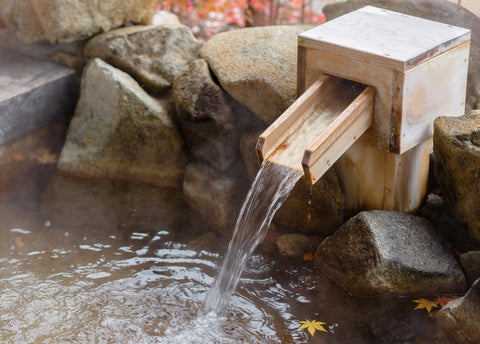
A quick look at the dictionary may tell you that an onsen is simply a Japanese hot spring. While that definition would be correct, onsen means a lot more than that, especially to the locals. A traditional onsen includes both the natural hot springs and the resorts built around them. These resorts are made up of inns and bathing facilities.
In the past, all onsen were outdoor baths. Today, the majority of them are indoors. People visit these facilities from within and outside Japan to soak in the hot baths and spend time at the resorts. The onsens tend to have hotels where visitors can stay while they explore the hot spring town.
There are over 30,000 hot springs in Japan, serving 3,000 onsen resorts. A hot spring is formed when water accumulates below the earth in a body of rock called an aquifer. This accumulated water tends to gather close to molten rock or magma, causing it to heat up. Eventually, the hot water rises through the earth cracks and comes out of the rocks as a mineral-rich hot spring.
For centuries, Japan has considered onsen baths to be therapeutic. Some people rely on it to cure muscle, joint, skin, and mental problems. The bath houses that sourced water from these springs were societal meeting points. People from all levels of hierarchy would come together to eat, drink, and take relaxing baths.
Today, the cultural significance of onsen in Japan hasn’t changed, even though its facilities have greatly improved. They still maintain the same benefits they had in the past, and people still follow the same traditions and etiquette while spending time at the hot springs.
The Art of Onsen Bathing: Traditions and Etiquette
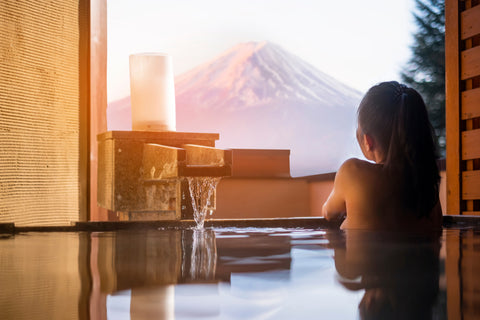
If you plan to visit a Japanese hot spring, you should learn all of the traditions and etiquette. The last thing you want is to find yourself in an awkward or embarrassing situation. So, let’s walk you through what to expect at every stage of your experience.
What to Expect in An Onsen
Before your visit:
Some onsens accept reservations. However, you can easily purchase tickets from a nearby vending machine or from the ticketing staff at the entrance. Depending on the bathing facility, you might need to remove your shoes before entering an onsen or its bathing area. If that’s the case, you should be provided with a storage locker for storing your stuff. Ask a staff member if you're unsure.
Another point of note is that most onsen in Japan do not allow access to individuals with tattoos. Do your best to confirm the resort's policy before going there.
During your visit:
You can either bring your own clean towel or make use of the one the facility provides. Please note that not many onsen will give you free towels, so come with extra cash. Another thing to note is that you can’t enter the water with a towel. There should be a shower near the bath, so feel free to use it to freshen up.
There will be other people at the bath. Some onsens allow for mixed-gender bathing, while others have rules related to that. Some have separate baths for women or children, while others have a swimming suit policy for their customers. Do ample research before visiting or ask questions when you get there.
Onsen Etiquette in Japan
Below is a list of etiquette to remember before visiting an onsen:
-
Do not enter the changing room with shoes.
-
Do not be afraid to get naked in the hot spring bath.
-
Do not jump or dive in the bath, and avoid splashing water on others.
-
Do not use your phone in the changing room.
-
Do not take pictures in or around the bathing area.
-
Have a good rinse or shower before entering the bath.
-
Do not trim hair in the onsen.
-
Avoid staring at other people.
-
Be sure to talk quietly without breaking the tranquility.
Exploring Japan's Onsen Towns: A Gateway to Relaxation
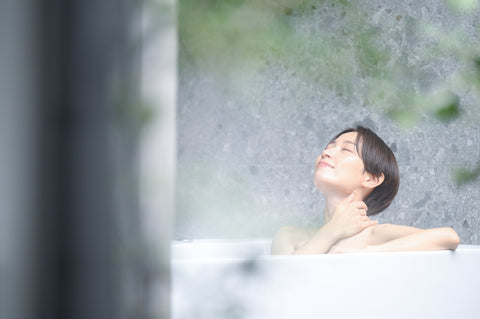
Recent research showed that over a billion people visit Japan’s hot spring towns annually. It’s clear that many onsen towns have a certain charm and appeal that keeps locals and foreigners coming back for more. Here’s why people love onsen towns:
-
Therapeutic benefits: Bathing in hot springs comes with several health benefits. Improved blood circulation, pain relief, and clear skin are some of the benefits that have been scientifically proven.
-
Native traditions: Some people love visiting the traditional inns or ryokans. These are great places to enjoy regional Japanese cuisine.
-
Stress relief: Hot springs are fun and relaxing. You get to soak in the hot water and look at beautiful scenery, which could greatly improve your mood.
-
Social interactions: Hot springs in Japan serve as social hubs for many people. You can strike up a quiet conversation with a willing participant without feeling embarrassed about your mutual nudity.
Let’s move on and review some of the best onsen towns in Japan.
Beppu: The Hot Spring Capital of Japan
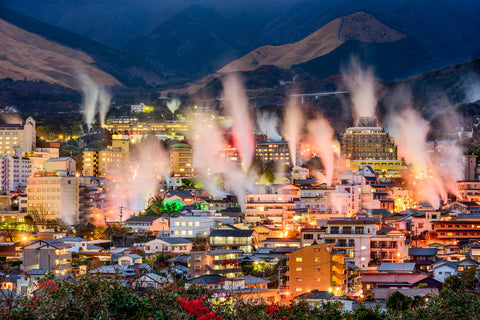
Very few hot spring resorts in Japan are as famous as Beppu. It produces the most water, so it’s unsurprising to find that the Kyushu-based town has the widest range of bathing experiences. Whether you’re in the mood for a mud bath, a steam bath, a sand bath, or a regular hot spring bath, a Beppu onsen has you covered. The town also features the Hells of Beppu, a collection of hot springs that come with spectacular scenic views.
Hakone: Onsen Bliss Near Tokyo
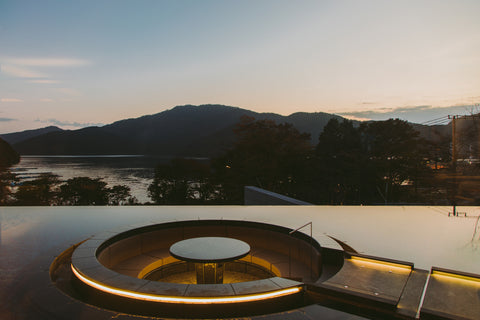
Hakone, a popular onsen destination close to Tokyo, is renowned for its scenic beauty, outdoor baths, and views of Mount Fuji. It also holds a portion of the Fuji-Hakone-Izu National Park. With over a dozen hot spring sources, Hakone is not short of quality steaming water. It’s also home to several ryokan. Guests at many of these inns can use the hot spring baths for free, but visitors have to pay.
The Snowy Delight of Hokkaido's Onsen
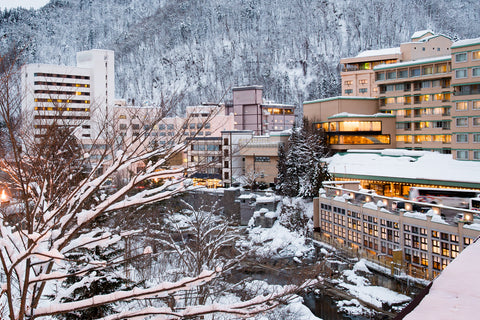
With a staggering 251 hot springs, Hokkaido has the most onsen in Japan. The city also has the lowest temperatures and atmospheric moisture content in Japan. Hence, it offers a magical onsen experience unmatched by any of the other resorts. Visitors can enjoy steaming baths surrounded by snow-covered landscapes.
Kusatsu Onsen: Healing Waters and Traditional Charm
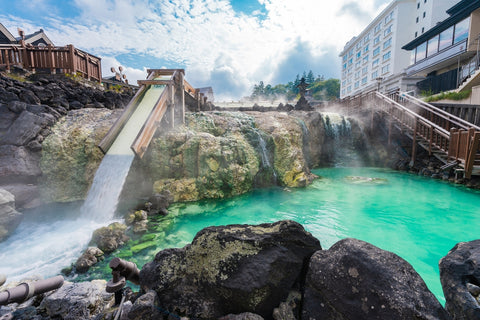
Rumor has it that the hot spring water in Kusatsu Onsen can cure all ailments of the body and heart. A German doctor serving on the Imperial Court was so impressed by the hot springs that he recommended their water as a solution to ailments. Whether you believe these claims or not, you’ll no doubt enjoy visiting this famous resort, especially its traditional Yubatake (hot water field).
Ibusuki: Unique Sand Baths of Kagoshima
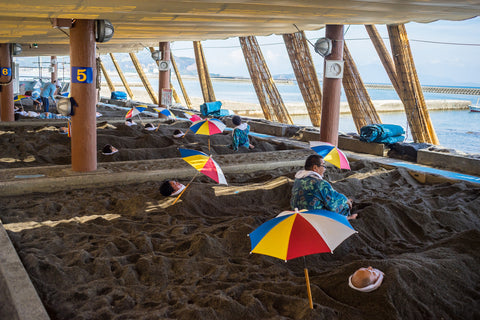
Ibusuki Onsen town is famous for its unique sand baths. The process may appear strange but it’s a big part of the resort's identity. Visitors, dressed in yukata robes, have to lie in the naturally heated sand while they’re buried from the neck down in the sand. After 10 to 20 minutes, they rise from the sand and take a shower to wash it off. The experience typically ends with a bath in a regular hot spring. There are many spots to enjoy this experience in the town but Saraku Sand Bath Hall is the most popular.
Luxury Onsen Resorts: Modern Comforts and Traditional Soaks

Japan's luxury onsen resorts combine traditional hot spring baths with modern amenities, offering a lavish relaxation experience. Below is our curated list of the best of these resorts:
-
Zaborin: Located in Hokkaido, Zaborin is a hot spring resort and ryokan with 15 villas and two onsen baths (indoor and outdoor). The luxury resort also has a library, bar, boutique, and lounge.
-
Hoshinoya Karuizawa: This Nagano-based property blends traditional hospitality with modern facilities. It has 50 guest rooms and one state-of-the-art onsen.
-
Fufu Atami: Located in Shizuoka, each room in Fufu Atami has its own hot spring bath with water coming from a private source underground.
Ryokan Stays: Experiencing Japan's Onsen Culture

Staying in any of the 50,000+ ryokans in Japan is an experience unlike any other. These establishments are not like regular inns. They offer a glimpse into authentic Japanese hospitality and relaxation culture. Every room, scenery, meal, or bath is designed with a singular aim: to get you to relax. Hence, many of these places have a strict anti-noise policy. You’ll love drinking seasonal green tea, napping indoors and outdoors, and eating traditional meals.
Seasonal Onsen Experiences: From Cherry Blossoms to Autumn Leaves

The onsen experience in Japan changes with the seasons, offering a special way to experience the seasonal beauty of the country. To get the full value, we recommend that you try outdoor onsens. Depending on the season, you can enjoy viewing cherry blossoms, the summer star-filled sky, vibrant autumn leaves, or the snowy winter surroundings—all while having a soothing bath.
Onsen for Every Traveler: Family-Friendly and Tattoo-Friendly Options

With so many onsens available, you can bet that there’s a bath facility for everyone. If you need a daily-friendly option, you can visit Nagashima Resort, Ibusuki Onsen, and Noboribetsu Onsen. Perhaps you’re looking for something a bit more private. Tokinoyu Setsugetsuka, Hotel Sakurai, Shimizu Ryokan, and Fufu Atami all have private onsen that you can enjoy. Got tattoos? No worries because the following resorts welcome all inked individuals: Ekimae Koto Onsen, Beppu Beach Sand Onsen, Kurokawa Onsen, Dogo Onsen Honkan, Kinosaki Onsen Station area, and Kaimonji Onsen.
The Healing Properties of Onsen Waters: A Scientific Perspective

The mineral composition of onsen waters depends on the type of rocks that hold its aquifer and the location of the hot springs. Hence, onsen hopping is a popular practice for people who believe in their healing properties.
Common minerals found in Japanese onsen include calcium, sodium chloride, iron, sulfur, and hydrogen sulfide. These minerals combine to form different types of springs and offer varying benefits.
-
Simple spring: fatigue recovery, pain relief, better sleep, and lower blood pressure.
-
Acidic spring: heals skin problems and athlete’s foot.
-
Sulfur spring: cleanses the skin, reduces blood pressure, and relaxes joint pain.
-
Salt spring: reduces joint pain and helps with infertility.
The Enduring Allure of Japan's Onsen

The warm, healing waters of hot springs in Japan have captivated visitors for centuries and will continue to do so. One can only assume that the demand for the onsen's escape will only increase in a world that is becoming more stressful with each passing generation. If you’d like to experience more of Japan through snacks, get yourself a Bokksu Snack Box subscription.
Author Bio







 Bokksu Snack Box
Bokksu Snack Box

























